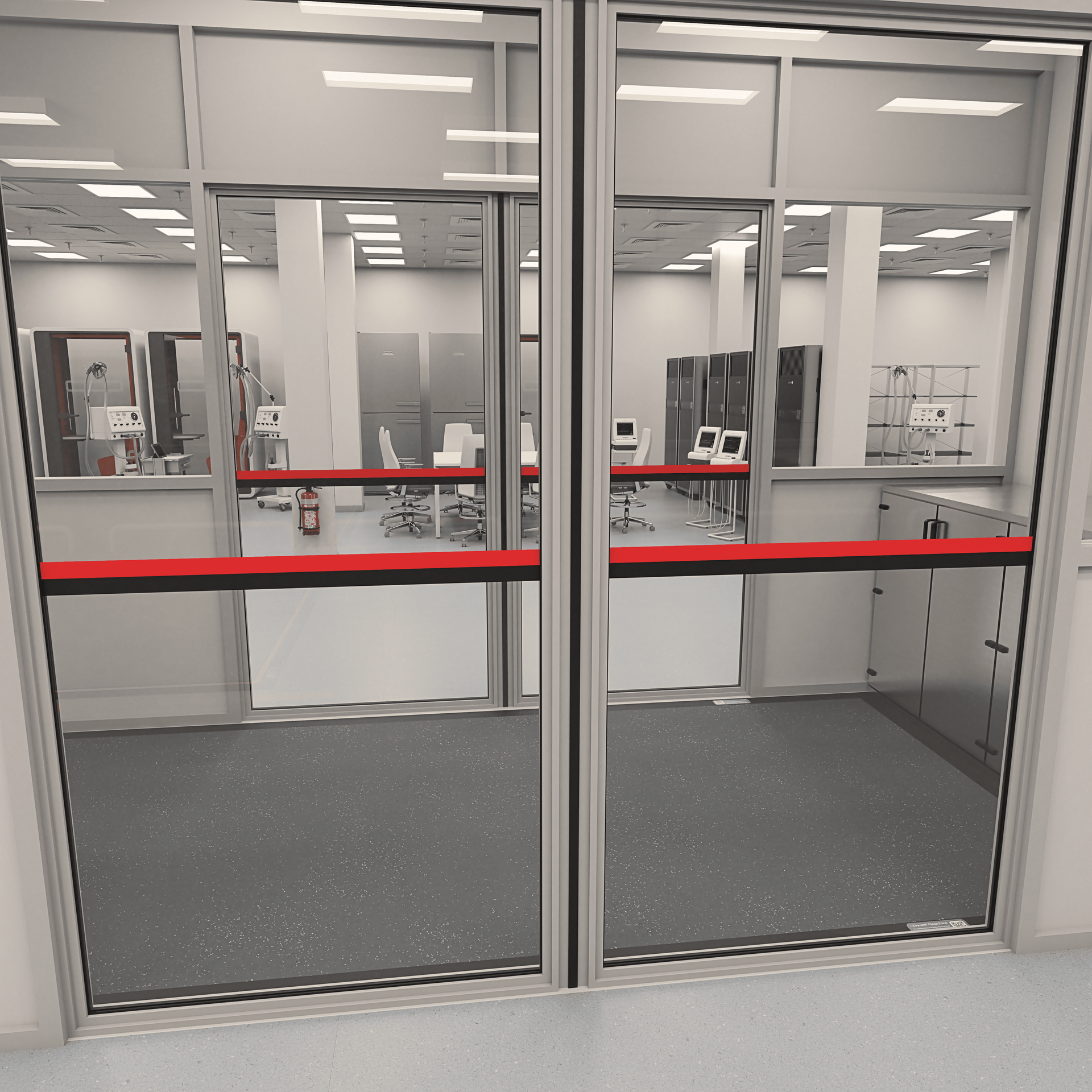Keeping your cleanroom free of contaminants is an important part of your operation, regardless of your industry. Implementing a solid contamination control strategy (CSS) is your best defense against the costly risks of tainted products and reputation damage.
But before you can tackle contamination, you need to know your enemy. Where does it come from? What forms does it take? The contamination source can come from personnel carrying microbes to dust particles introduced by equipment. Taking different steps as part of a full cleanroom protocol will ensure your controlled environment remains safe from potential threats.
1. Correct Gowning Techniques
Human contamination is the biggest threat to cleanroom integrity, making effective gowning procedures essential. The specifics of these protocols depend on your cleanroom class and application, with sterile environments requiring additional measures like goggles.
To minimize contamination risk, follow a top-to-bottom gowning sequence before entering the cleanroom: start with the hood and finish with shoe covers. This prevents contaminants from falling onto clean areas of the garment. Ensure all garments fit properly, and use mirrors or a buddy system for thorough checks.
Maintain strict personal hygiene standards, including regular handwashing and avoiding cosmetics or fragrances that could introduce particles into the cleanroom environment.
2. High-Efficiency Particulate Air (HEPA) Filters
HEPA filters are used to maintain air quality and control airflow in cleanrooms. These filters capture contaminants as small as 0.3 microns to provide a consistent and clean airflow throughout the space. Compliance with cleanroom standards and regulations often requires using HEPA filters, which are vital to ensuring product quality and safety.
Regular maintenance and timely replacements are necessary to keep HEPA filters functioning effectively. This ensures the filters perform their best, maintaining a contaminant-free environment in your cleanroom.
3. Dycem Mats
One of the best ways to prevent cleanroom contamination at floor level is the use of Dycem mats. 80% of the contamination in cleanrooms is said to enter critical spaces via the floor level, making it a significant risk to address as part of your contamination control strategy.
Dycem mats like WorkZone and Floating Mats provide an effective, reusable solution to preventing contamination from shoes and wheels by up to 99.9% and reducing airborne contamination by up to 75%. Our mats have a naturally tacky surface that retains contamination until cleaned away. Compared to other alternatives, like peel-off sticky mats, Dycem mats offer superior performance and longevity, significantly reducing the risk and enhancing the effectiveness of your CCS.
4. Proper Cleaning Protocols
Strict cleaning procedures must be followed to remove contaminants effectively. Use designated cleanroom supplies to prevent cross-contamination between different areas and ensure that cleaning is performed on a regular schedule. To avoid introducing additional contaminants, wipes, swabs, and other cleaning supplies should be rated and compliant for cleanroom use for your specific ISO Class. For example, ISO Class 5 cleanrooms require low-particle and sterile supplies, while ISO Class 8 may allow for slightly less stringent options.
If you decide to employ specialized cleaning services, it can further improve the thoroughness and consistency of your cleanroom maintenance. Regular audits and adherence to cleaning protocols are essential to maintaining a contamination-free environment.
5. Environmental Monitoring
Environmental monitoring systems are key to maintaining optimal cleanroom conditions, as they track parameters like temperature, humidity, pressure, and particle counts. By constantly monitoring these factors, you can spot potential contamination issues early and take quick corrective action. This proactive approach prevents major contamination events and helps avoid costly shutdowns. Investing in robust monitoring systems can lead to significant long-term savings and ensure consistent product quality.
6. Regular Training
Keep your cleanroom staff up-to-date with ongoing education on contamination prevention and best practices. Regularly review your current procedures and analyze any incidents to pinpoint areas for improvement. In his most recent webinar, Dr Tim Sandle suggests appointing contamination control ambassadors – these team members can promote awareness and set an example for their colleagues. By fostering a culture of continuous learning and improvement, you’ll strengthen your contamination control efforts across the board.
7. Move Conscientiously
Personnel should be mindful of their movements in critical areas, as rapid motion can increase particle shedding, like skin flakes, and heighten the risk of contamination. To minimize this risk, staff should move slowly and deliberately through these sensitive zones. By adopting careful and controlled movements, you can significantly reduce the potential for contamination and maintain a cleaner environment.
8. Strict Access Controls
Reduce the risk of contamination by limiting cleanroom entry to essential personnel only. Implement access controls like key cards, biometric scanners, and visitor logs to ensure only authorized staff can enter. These measures not only boost security but also provide a detailed record of cleanroom traffic so you can regularly review and update access permissions to keep them in line with current operational needs. By maintaining tight control over who enters your cleanroom, you’ll significantly reduce contamination risks and enhance overall cleanliness.
Prevent Cleanroom Contamination with Dycem
Achieving a contamination-free cleanroom is essential for product quality and brand integrity, and Dycem offers innovative solutions to help you maintain the highest standards of cleanliness and safety.
Take the next step in safeguarding your cleanroom. Contact us today to learn how our products can boost your contamination control strategy.

